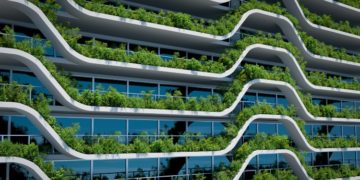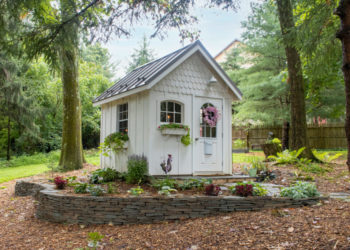Have you ever walked into a space and instantly felt calmer, more focused, or just happier? Chances are, that space was embracing biophilic design. This trend isn’t just about adding a few potted plants to a room—it’s a thoughtful approach to creating environments that connect us to nature, boosting well-being and productivity while looking stunning. If you’re intrigued by how you can transform your interiors with biophilic principles, keep reading because we’re about to unpack how this movement is reshaping spaces, one natural element at a time.
What Exactly is Biophilic Design?
Biophilic design focuses on integrating natural elements into our indoor environments. The idea is simple: humans are naturally wired to feel better when surrounded by nature. Think of it as bringing the outdoors inside in a way that feels organic, intentional, and beautiful. But don’t mistake this for just tossing a few plants on shelves—biophilic design is much more than that. It’s about light, textures, materials, and even the layout of a space.
Why is it becoming so popular? People are spending more time indoors than ever before, so it’s no surprise we’re craving natural elements in our homes and workplaces. Beyond aesthetics, biophilic spaces have been linked to reduced stress, increased focus, and overall better mental health.
Beautiful Detailing: Custom Cabinets and Drawers
When it comes to biophilic design, the details matter. Custom drawers and cabinets crafted with natural materials like reclaimed wood or bamboo can completely change the feel of a room. Not only do these pieces add visual warmth, but they also tie into the sustainable aspect of biophilic design.
Imagine opening a drawer and seeing beautifully grained wood or subtle carvings inspired by organic shapes. These small details elevate functionality while adding personality to your space. Choosing materials with natural finishes—think matte or lightly polished rather than overly glossy—keeps the look grounded and authentic. Whether you’re revamping a kitchen, bathroom, or home office, this approach from an industry leader like Lovech combines practicality with elegance.
Incorporating Living Plants
Let’s talk plants, the undeniable stars of biophilic design. They don’t just make a space look alive (pun intended); they literally purify the air and create a sense of calm. But instead of just scattering a few random pots around, consider how you can integrate greenery creatively.
Vertical gardens, for instance, are a fantastic way to make a statement. They’re perfect for smaller spaces where floor real estate is limited. Or think about installing a large feature plant like a fiddle-leaf fig in a corner that needs some life. Even hanging planters or moss walls can add depth to your space.
Pro tip: Choose plants that thrive indoors and fit your lifestyle. If you’re not great at plant care, low-maintenance options like snake plants or pothos are both forgiving and stylish.
Natural Light: The Ultimate Design Element
What’s the point of incorporating natural materials if your space feels dark and dreary? Lighting is a cornerstone of biophilic design, and maximising natural light should always be a priority. If you’re lucky enough to have large windows, let them be the star of the show. Keep window treatments light and minimal to allow as much sunlight in as possible. Additionally, you can also consider installing a skylight from Sunsquare, or other reputable brands. This can improve the brightness and ambiance of the space by flooding it with sunlight. They can also be excellent solution for areas where vertical windows may not be enough.
For spaces with limited natural light, don’t worry—there are clever ways to mimic its effect. Warm LED lighting, for instance, can replicate the glow of the sun, while mirrors can help reflect light around the room, making it feel brighter and more open.
Using Natural Textures and Materials
Biophilic design thrives on texture. From woven rugs to stone countertops, the tactile quality of natural materials can transform how a space feels. Think about introducing elements like untreated wood furniture, linen textiles, or clay accents. These materials not only look beautiful but also age gracefully, developing character over time.
In kitchens and bathrooms, stone or marble surfaces are a timeless way to incorporate natural textures. For living rooms or bedrooms, jute rugs, leather furniture, or even simple wooden picture frames can add layers of interest.
The key here is balance—mix textures without overwhelming the space. For example, pairing a sleek wooden dining table with soft linen chairs strikes the perfect harmony between structured and relaxed.
Water Features for a Calming Touch
Few things are more relaxing than the sound of running water. Including water features in your space is another way to enhance the biophilic effect. This doesn’t mean you need a full-blown indoor fountain; even a small tabletop water feature can create a soothing atmosphere.
If you’re renovating, consider options like built-in water walls or incorporating water into your garden space if you have one. The gentle trickling of water not only adds to the sensory experience but also acts as white noise, which can improve focus in home offices or create a tranquil vibe in living spaces.
Designing for Well-being
At its heart, biophilic design is about improving how we feel in a space. Beyond plants and textures, this can include designing areas for relaxation, like a cosy reading nook with plenty of natural light, or even rearranging furniture to encourage better flow and connection.
Consider how your senses interact with your environment. Soft lighting, subtle scents like lavender, and even the right temperature can influence how comfortable a space feels. Think of biophilic design as a way to create a personal sanctuary that nurtures your mind and body.
Is Biophilic Design Right for You?
If you’re looking to make your home or workspace feel more inviting, calming, and functional, biophilic design is absolutely worth exploring. It’s not just a trend—it’s a shift in how we think about the spaces we inhabit. By incorporating natural elements thoughtfully, you’re creating an environment that supports your well-being while showcasing timeless style.











































































